




Your support is critical to our success.
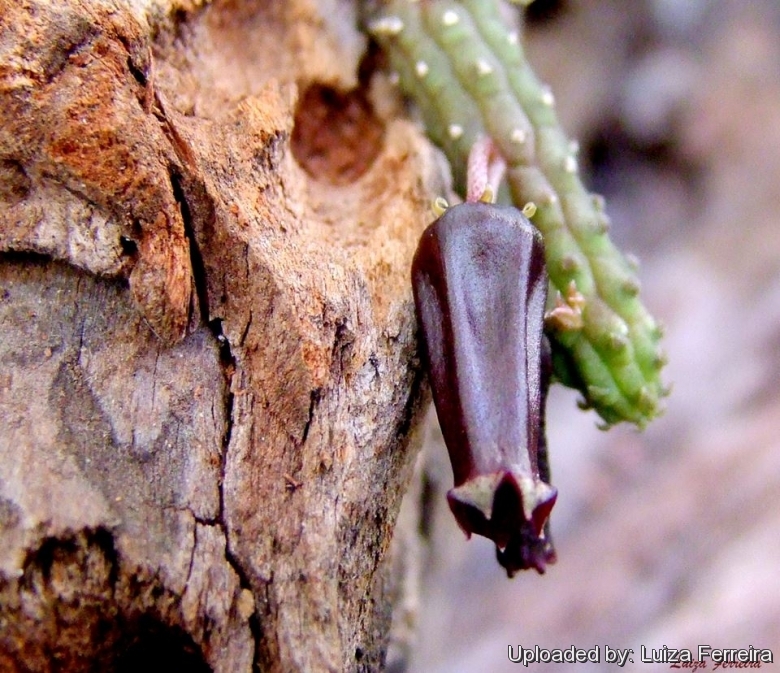
Origin and Habitat: Yemen.
Altitude range: It is widespread at altitudes between 700m and 2000m above sea level.
Synonyms:
- Echidnopsis squamulata (Decne.) P.R.O.Bally
- Ceropegia squamulata Decne.
Description: Echidnopsis squamulataSN|30338]]SN|30418]] is a crawling perennial succulent that form extensive mats as its stems tend to root along their entire length. It is a very variable species, which may perhaps be divided into 2 subspecies.
Stems: Creeping, rooting almost over their whole length. green to brownish-green, to 45 cm long and 5-8 mm thick.
Tubercles: Flat, arranged in 6-8(-9) ribs.
Leaves: Rudimentary ovate-deltoid, revolute.
Inflorescence: Pedicels 5-8 mm, 1 mm thick, dotted with reddish-brown.
Flowers: Sepals to 3 mm, lanceolate, pointed, glabrous; orolla outside reddish-brown, margins sometimes with pale yellow spots, urceolate. pentagonal, 11-18 mm long, max. 5-8 mm across, mouth 2-3 mm in diameter. Corolla-lobes triangular, erect, spotted with pale yellow, inside reddish-brown to dark purple or yellow spotted with red, tips abruptly curved outwards, 1.5-2.5 mm long, basally 1.25-2.5 mm wide, outside glabrous, inside velvety-papillose, papillae fine, acute, scattered, Corolla-tube margins finely papillose, otherwise shiny. Corona 3.5-5 mm on diameter, pentagonal; Outer corona lobes red spotted with yellow or reddish-brown, cup-or basin-shaped, margins irregularly dentate, often inflexed, inside rugose, covered with nectar. Inner corona lobes pinkish-red, erect-connivent.
Similar species: E. squamulata is very closely allied to Echidnopsis ericifloraSN|30342]]SN|30342]] and Echidnopsis urceolataSN|30418]]SN|30338]]. It differs from E. ericiflora very obviously by the pentagonal and not circular cross-section of the flower. Vegetatively it is more or less indistinguishable from E. ericiflora, having identical leaves and only slightly thicker stems. Apart from the above-mentioned differences the pedicel is also much longer than in this species. E. squamulata, with its repent stem, long pedicel and longer corolla is the most specialised of the closely-related group to which it belongs. This species shows the extremes to which these plants will go to accommodate specific pollinators: the strange tubular flower is swollen at the base and constricted to form a narrow neck tipped with minute petal lobes. The opening at the neck is only a millimetre or less in width, excluding all but the tiniest insects. All three species are of relatively restricted distribution.
Bibliography: Major references and further lectures
1) Focke Albers, Ulrich Meve “Illustrated Handbook of Succulent Plants: Asclepiadaceae: Asclepiadaceae” Volume 4 Springer Science & Business Media, 2002
2) “Note on Echidnopsis squamulata (Dcne) Bally (S Arabia), with amplified description”: J S Afr Bot 30 (1 ): 15-19, 1964
3) Alan Weiss "Desert Starfish continued" in: Espinas y Flores, Newsletter of the San Diego Cactus & Succulents Society, Affiliate of the Cactus and Succulent Society of America, Inc. Volume XXXI Number 12, Saturday, December 14,1996 pages 8-9. reprint from: Explorer - A magazine of natural sciences, Summer 1985, volume 27 number 2, Wm. C. Baughman, Editor, 1985 by The Cleveland Museum of Natural History.
4) Echidnopsis ericiflora in: Bradleya, volume 6, pages 27-29,1988
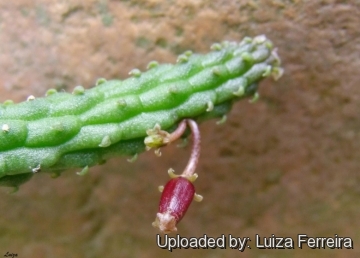
Echidnopsis squamulata Photo by: Luiza Ferreira
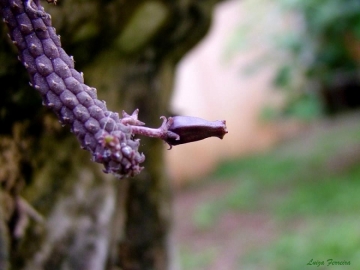
Echidnopsis squamulata Photo by: Luiza Ferreira
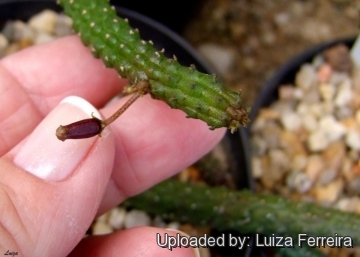
Echidnopsis squamulata Photo by: Luiza Ferreira
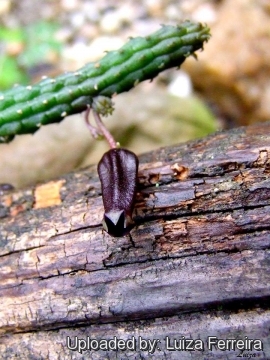
Echidnopsis squamulata Photo by: Luiza Ferreira
Cultivation and Propagation: Echidnopsis ericifloraSN|30342]]SN|30342]] is an easy obliging blooming plant, which is happy in any average succulent house.
Soil: Since roots are quite shallow, use a cactus mix or add extra perlite or pumice to regular soil potting soil. A gritty, very free-draining compost is suitable, and clay pots help the plants to dry out between watering.
Watering: They require moderately watering through the growing season but enjoy plenty of water and some fertiliser in hot weather, this helps them to flower freely. Water more sparingly in winter according to temperatures. But, as with most asclepiads, it is unwise to leave them wet in cold weather.
Hardiness: Winter care presents no problems at 10°C with plenty of light.
Sun Exposure: Partial sun or light shade.
Pest and diseases: They are generally fairly easy to grow, especially if kept pest-free. They are susceptible to stem and root mealy bugs, and damage from these may well initiate fungal attack. If you do have problems with a stem or with basal rotting, you can reliably isolate the healthy parts, dry them off, and re-root them in moist compost.
Cultural Practices: Re-pot every 2 years.
Propagation: Easiest with stem cuttings. Allow cuttings to dry a day before planting. Stems must be laid (Not buried) on gritty compost and will then root from the underside of the stems. It can also be increased from seeds sowing in spring in moist, sandy peat moss. Barely cover seeds.
| Your Actions | |
|---|---|
| Back to Echidnopsis index | |
| Back to Asclepiadaceae index | |
 |
Back to Succulents Encyclopedia index |
Privacy stantement - Terms and conditions - How to cite - About us - Feedback - Donate



